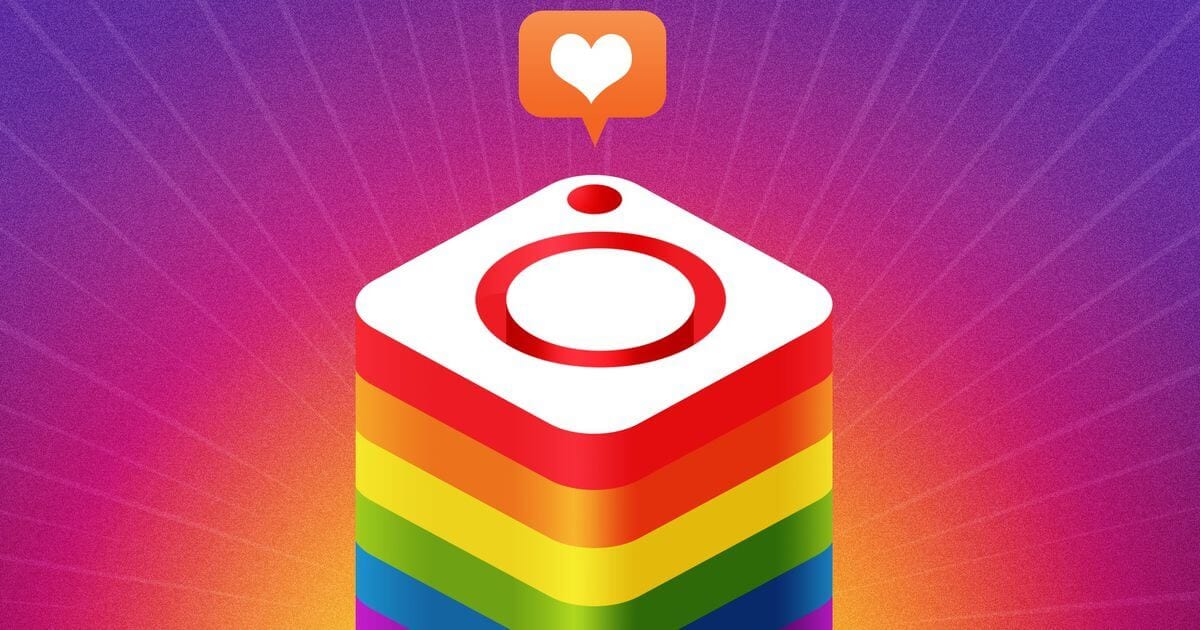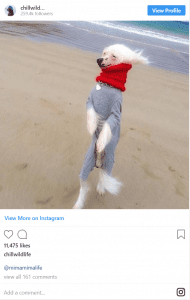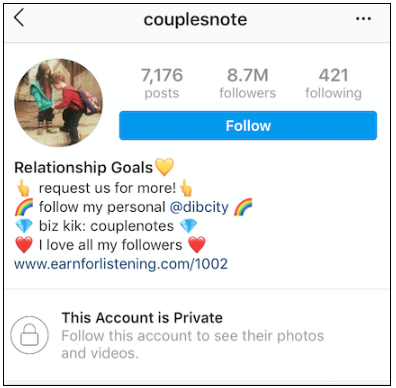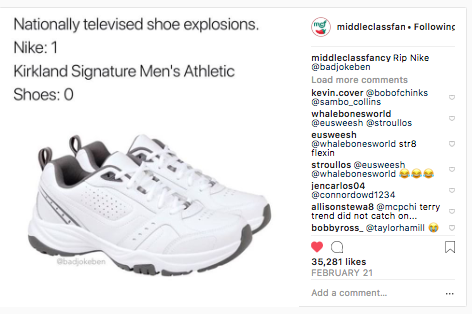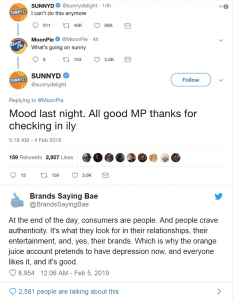Does it feel like meme accounts are taking over your social media feeds? The format is everywhere these days, including Instagram, where accounts like Daquan and Kale Salad have amassed lots of followers and become brand names.
While those accounts appear silly and aimless, like that goofy stoner from your high school, many are literally strategic and successful—like when that stoner grows up to be Steve Jobs.
Listed below are some marketing lessons you could learn from the dankest meme accounts on Instagram.
10 factors meme accounts get right about Instagram marketing strategy
1. They understand the value of a good caption
Instagram captions drive engagement once they are done well, and that is an area where meme accounts succeed.
Their captions tend to be short and easy, which make them simple to read even while scrolling through the feed. Brief captions are also always totally displayed, which means users could take in the whole post without clicking out of the feed.
Meme captions additionally usually including another layer to the joke in the picture or video.
Lots of accounts use the longer caption to tell stories or connect with fans, with some even sharing blog-like content in their texts. While long captions might be efficient, they also require extra funding from your audience. Meme accounts prove that brief captions could work just as well for engagement.
2. They have broad appeal
This seems inherent to the idea of a meme, which is defined by its popularity. However, meme accounts excel at turning obscure or niche source material into an accessible, broadly appealing joke.
For example, @classic.art.memes combines fine art pieces with relatable captions. Even when you do not know much about art history, you could still laugh at this post.
https://www.instagram.com/p/BuZSILmH-Sl/?utm_source=ig_embed
That does not mean that you need to attempt to appeal to everybody and create the broadest possible content. However, all brands should think about who their target audiences are, and make sure that they are making content that speaks to their interests and knowledge.
3. They have a consistent aesthetic
The meme aesthetic is instantly recognizable: normally familiar photographs or goofy images, with text overlaid or above the picture.
Typically they are just text or screencaps from Twitter or Tumblr. However, whenever you see one, you instantly understand it’s a meme.
The recognizability of meme posts proves that consistency is necessary for building your brand on Instagram. Ideally, you want your fans to know they are seeing a post or Story from you before they even check the account.
Some meme accounts are now applying a more typical “Instagram” aesthetic, leading to a hybrid style: meme-and-theme accounts. They are like beautifully-wrapped gag presents and are particularly popular among teens.
Meme-and-theme accounts additionally advice that some creators are looking to stand out from their fellow meme-makers by cultivating a more distinctive look, something a little prettier than Lisa Simpson and her coffee.
4. They know their audience
Meme accounts definitely have mass appeal, however, they are also targeted to a specific audience. Broadly speaking, it’s Millennials and Gen Z-ers who spend lots of time online, consume lots of media and have a sarcastic sense of humor.
However, meme accounts also carve out distinct identities that align with their audience. @mytherapistsays riffs the challenges of “adulting” for women with memes about work and relationship anxieties, while @journal skews to younger teenagers (however still female). Some are more niche: @jakesastrology makes memes for astrology lovers, that are a surprisingly large demographic.
While some meme accounts are managed by companies (@journal is one), most became popular because they’re making content for their friends, who had related senses of humor and pop culture tastes.
This authenticity helped them keep away from the “How do you do, fellow kids?” awkwardness that arises when company brands attempt to sound like teenagers.
That does not mean firms could only successfully reach audiences who’re just like them—however, it does mean that real understanding is important for connection.
5. They stand out
When you ever get deja vu scrolling via your feed, you’re not alone. Pictures on Instagram are beginning to look the same, thanks to the power of visual developments.
This has been powerfully documented by @insta_repeat, an account that documents popular themes on the platform. Canoes are a giant one:
Meme accounts break from this formula. Their posts might not be pretty, however, they grab your attention because they do not look like anything else. Actually, the unattractive look of meme posts are usually intentional, an Instagram version of “Internet Ugly.”
That helps them stand out even from posts with related content. You have probably seen one million cute dog images on Instagram. However how often do you see one like this?
A windblown beach dog might not make sense for your brand, however, the lesson applies: standing out from the pack could pay off.
6. They create shareable content
Every brand desires their content to spread. Most try to obtain that through quality: good blog posts (what’s up!), pretty photographs, informative newsletters.
However, meme accounts mostly depend on accessible, immediately recognizable silliness.
Their jokes work because they’re relatable, and they draw from a well of prevalent culture that most of their followers know. Nearly 75,000 people liked this post from @daddyissues_ because Friends and Nicolas Cage are common cultural ground.
In addition to racking up positive engagement, that is additionally a wise strategy for audience development. The comments on meme posts are filled with users tagging friends who will also find them funny. These friends are likely to hit follow when they are finished laughing.
7. They make use of FOMO
A constant struggle for brands is how to make sure their audience sees their content. This has long been a problem on Facebook, where natural engagement has declined sharply. Many expect the same thing might happen on Instagram eventually.
There are many tips for rising your organic engagement on social media. However, some meme accounts are using an ingenious and surprising tactic: making their accounts private.
Private accounts are exclusive by nature. This triggers FOMO among Instagram users on the outside, who naturally wish to discover out what they are missing.
With a public account, you are less incentivized to follow because you could check their feed at any time. However, with a private account, you should opt in.
As a result, new fans are excited when their request to follow is accepted, while existing followers get to feel particular for being on the inside all along. It builds a sense of loyalty and community, which reinforces engagement.
8. They partner with brands who match their values
It may surprise you to know that meme accounts can (and do!) post sponsored content. With their huge, highly-engaged audiences, they are fascinating partners for brands. What’s more, they do sponsor content really well.
Their sponsored posts always fit into their overall content technique. That is because meme accounts are skilled at identifying partners who fit with their values.
https://www.instagram.com/p/BvAN1DdBx9C/?utm_source=ig_embed
And since meme accounts post so regularly, the sponsored content never dominates their feed. Instead, they offer a balance of original content and the occasional advert.
9. They’re topical
On February 19, a freak Nike shoe “explosion” occurred during a college basketball game. The next day, @middleclassfancy — an account that specializes in-jokes about uncool brands and merchandise — riffed on the event with a post about Costco sneakers:
While many brands are struggling to keep up with the rapid meme lifecycle, meme accounts succeed by rapidly turning every new cultural event into content. The Marie Kondo show on Netflix, predictably, sparked a wave of memes:
https://www.instagram.com/p/BtYeJcLlTzc/?utm_source=ig_embed
Meme accounts are always on top of pop culture in part because they are small operations— usually run by a single person— which means no marketing team having to review and sign off on each post.
This lets them move rapidly and take a look at out a joke format to see if it works for audiences. If it does, it’s likely to be replicated across the meme universe (do you even keep in mind life before the Distracted Boyfriend?)
The takeaway? Be nimble and run lots of tests on your content. It will help you learn what your audience likes, and you may even catch that next meme wave before it’s over.
10. They’re mysterious
More than ever, brands are open and communicative with their audiences. Customers expect authenticity and transparency from firms in exchange for their loyalty. And lots of brands have found success by adopting more and more casual and familiar tones on social media, like Wendy’s infamously sarcastic Twitter.
However, this method could backfire when audiences begin to feel like brands are getting too personal on social media:
That is another area where most meme accounts have taken the opposite method. They are largely anonymous, and in some cases, their secrecy has only made them more fascinating to followers. @daquan acquired millions of followers while concealing his identity (which has since been revealed).
There’s so little thriller left on the Web. Even the folks operating manufacturers are as influential because of the manufacturers themselves (the Jenna Lyons effect). So it is sensible audiences would discover an enigma compelling.
It isn’t possible (or even a great idea!) for firms to try and mimic this strategy. However, it’s worth remembering, when launching a new campaign or product, that a little mystery goes a long way.

